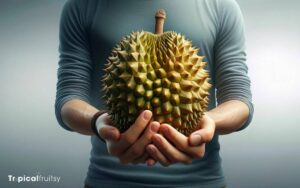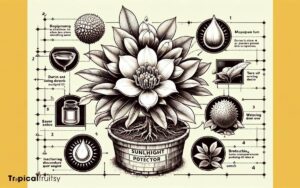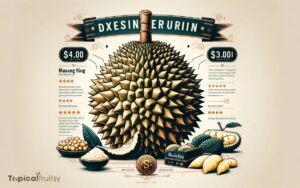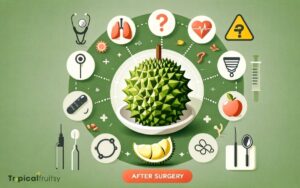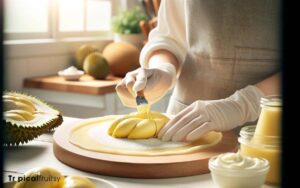How to Grow Musang King Durian? 8 Easy Steps!
To successfully grow Musang King Durian, it is necessary to follow a series of well-defined steps that cater to the plant’s specific needs.
Start with selecting healthy seedlings and plant them in a tropical environment with sufficient sunlight and wind protection. The soil should be nutrient-rich and well-draining.
Regular watering is crucial, but avoid waterlogging. Apply fertilizers according to the plant’s growth stage and nutritional requirements.
Prune the trees for better canopy structure and easier harvesting. Implement effective pest and disease control strategies.
Finally, harvest the durians at the right time and handle them carefully post-harvest to ensure peak quality.
Growing Musang King Durian involves:
Achieving the perfect Musang King Durian crop demands attention to detail and dedication to the growing process from seedling to harvest.
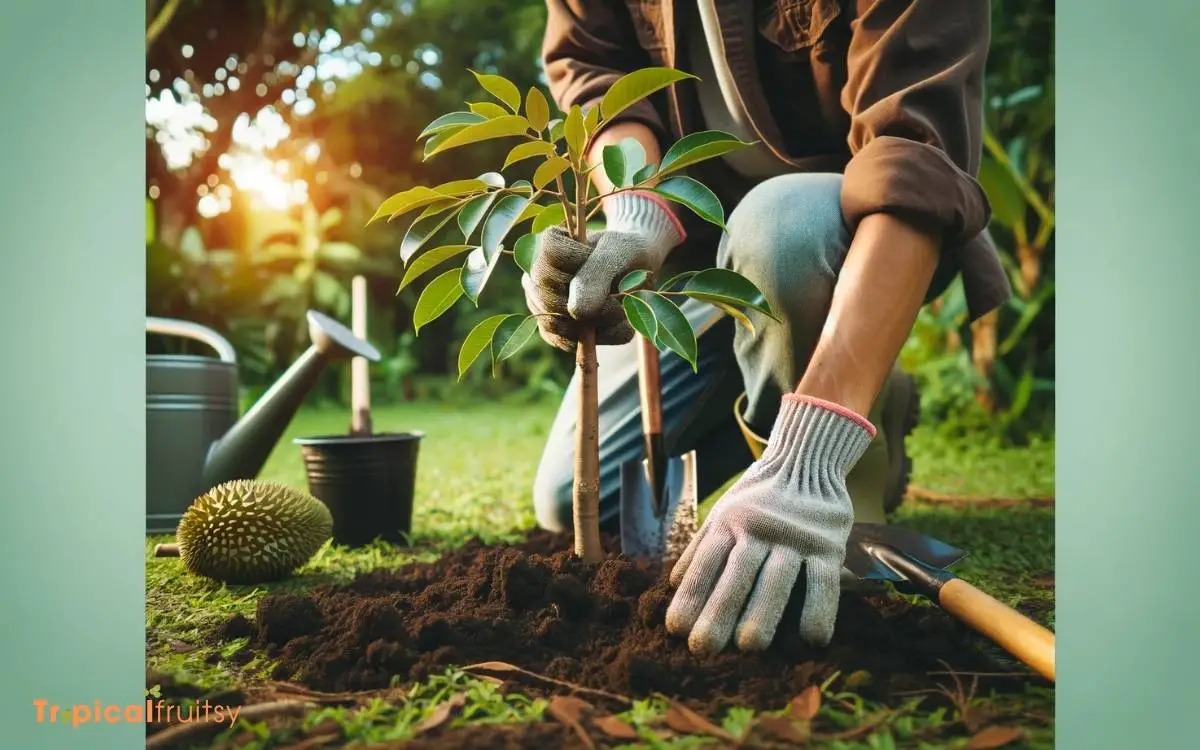
Key Takeaway
Step 1: Selecting Quality Seedlings
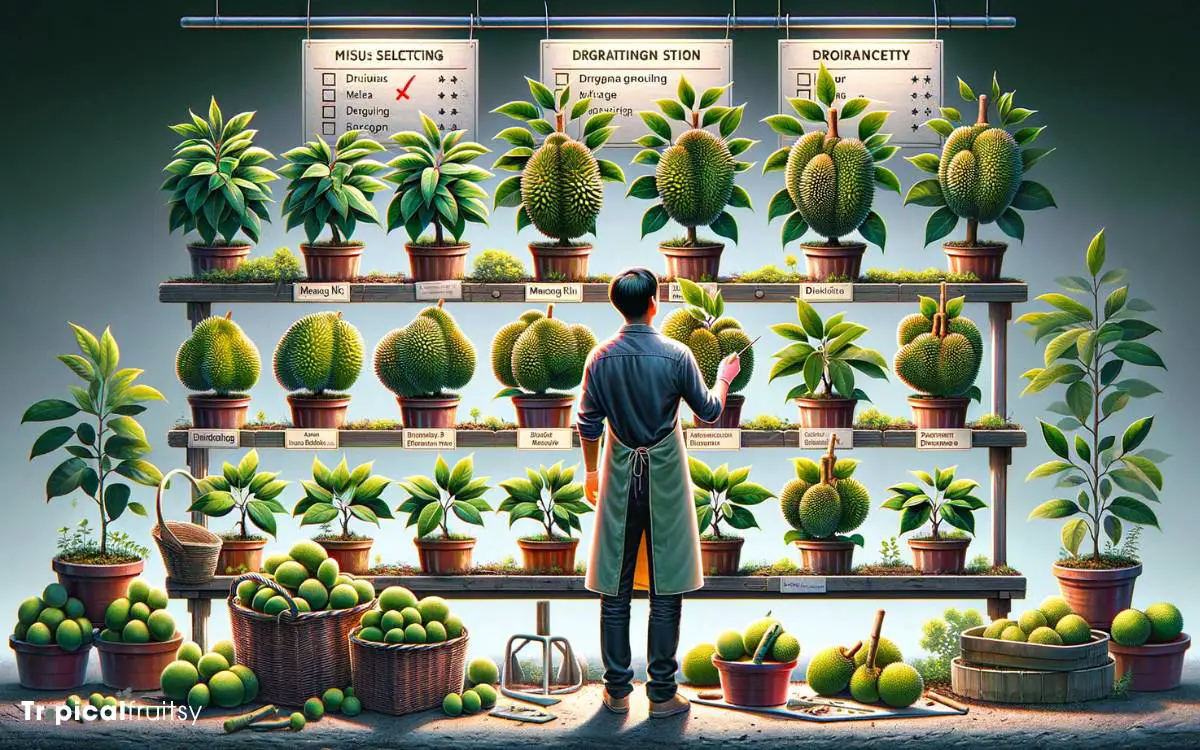
Choosing the right seedlings is crucial for cultivating Musang King Durian. The quality of the initial planting material can have a profound impact on the success of the orchard.
High-quality seedlings should exhibit vigorous growth, robust root systems, and be free from pests and diseases.
It is imperative to source seedlings from reputable nurseries that adhere to stringent propagation standards. Genetic fidelity is paramount.
Thus, clonal seedlings, derived from grafting or other vegetative propagation techniques that ensure genetic consistency with parent trees known for superior fruit quality, are preferred.
Furthermore, seedlings should be acclimatized to the local environment to enhance survival rates.
Diligent selection based on these criteria lays the foundation for high-yield, premium-quality Musang King Durian production.
Step 2: Ideal Planting Conditions
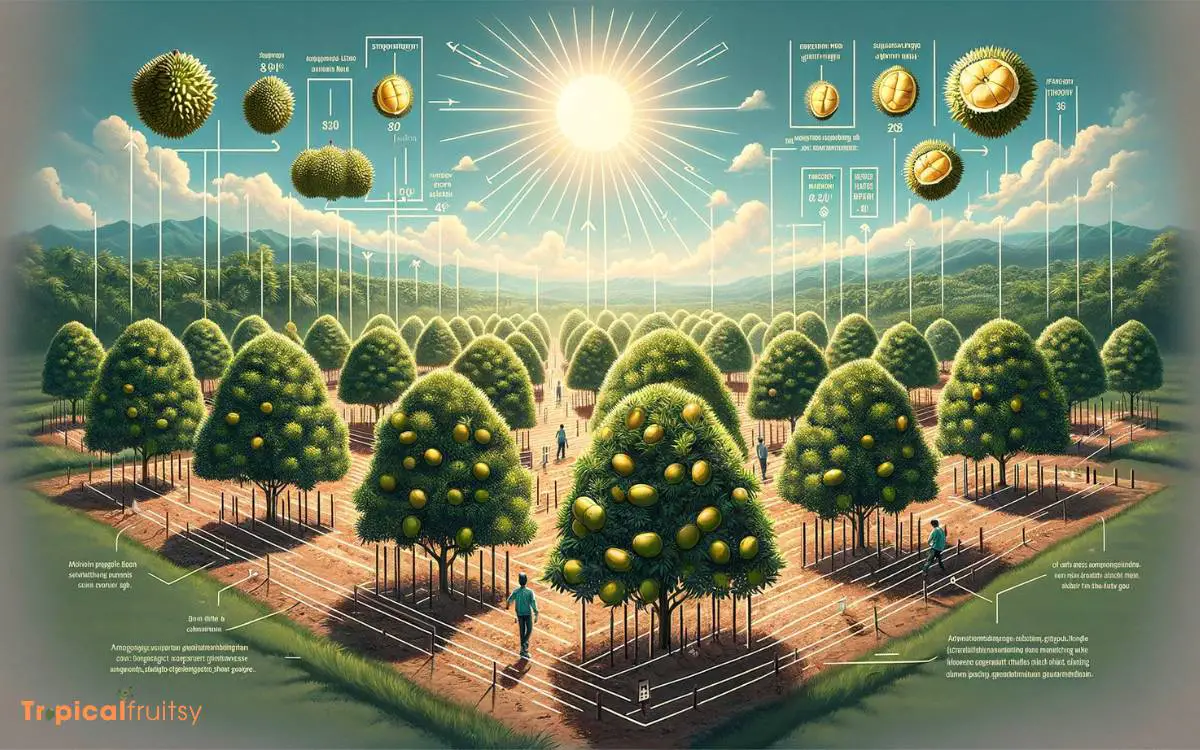
For successful cultivation of Musang King Durian, attention to specific soil, climatic, and hydrological conditions is essential.
The soil must be fertile, well-drained, and rich in organic matter to support the demanding root system of the durian tree.
Optimal growth occurs in areas with consistent temperatures ranging from 24 to 30 degrees Celsius and high humidity, complemented by adequate rainfall and proper irrigation to maintain soil moisture without waterlogging.
Soil Type Requirements
The Musang King durian’s optimal growth requires well-drained, fertile soil with a pH ranging between 6 and 7.
This specific pH range facilitates the uptake of essential nutrients and minimizes the risk of soil-borne diseases. The soil should be rich in organic matter to provide adequate nutrition and improve soil structure.
A loamy texture is ideal as it ensures aeration and moisture retention without causing waterlogging, which is detrimental to the durian’s root system.
| Soil Characteristic | Importance | Ideal Condition |
|---|---|---|
| Drainage | Prevents root rot | Well-drained |
| Fertility | Nutrient availability | High organic content |
| pH Level | Nutrient uptake | 6.0 – 7.0 |
| Texture | Aeration and moisture retention | Loamy |
Adherence to these soil requirements is crucial for the successful cultivation of Musang King durian trees.
Climate and Temperature
Successful cultivation of Musang King durian requires a climate with consistent temperatures ranging from 24°C to 30°C and high humidity. These tropical conditions are essential for optimal growth and fruit development.
The species thrives in areas with a mean annual rainfall between 1,500 to 2,500 millimeters, which should be well-distributed throughout the year.
Durian trees are sensitive to prolonged dry periods, which can adversely affect both yield and quality of the fruit.
Additionally, to avoid damage to the blossoms and young fruits, areas with minimal strong wind exposure are favored.
The tree’s phenological cycle, including flowering and fruiting periods, is directly influenced by the climatic conditions, necessitating a stable environment to ensure successful cultivation and high-quality produce.
Water and Drainage
Adequate water supply and efficient drainage systems are critical for the healthy growth of Musang King durian trees.
These tropical plants demand consistent moisture, particularly during the flowering and fruiting stages, yet they are susceptible to root rot if exposed to waterlogged conditions.
As such, it is imperative to strike a balance between irrigation and drainage to ensure optimal soil moisture levels.
The following table delineates the ideal planting conditions which, if adhered to, can significantly enhance the development of these coveted fruit trees.
| Factor | Requirement |
|---|---|
| Soil Type | Deep, fertile, well-drained loamy soil |
| Watering | Regular, avoid waterlogging, reduce in rainy season |
| Drainage | Must be efficient to prevent root diseases |
| Irrigation | Drip or micro-sprinkler systems recommended |
| Monitoring | Check soil moisture regularly, adjust as necessary |
Implementing the above parameters fosters a conducive environment for Musang King durian trees to flourish.
Step 3: Soil Preparation Techniques
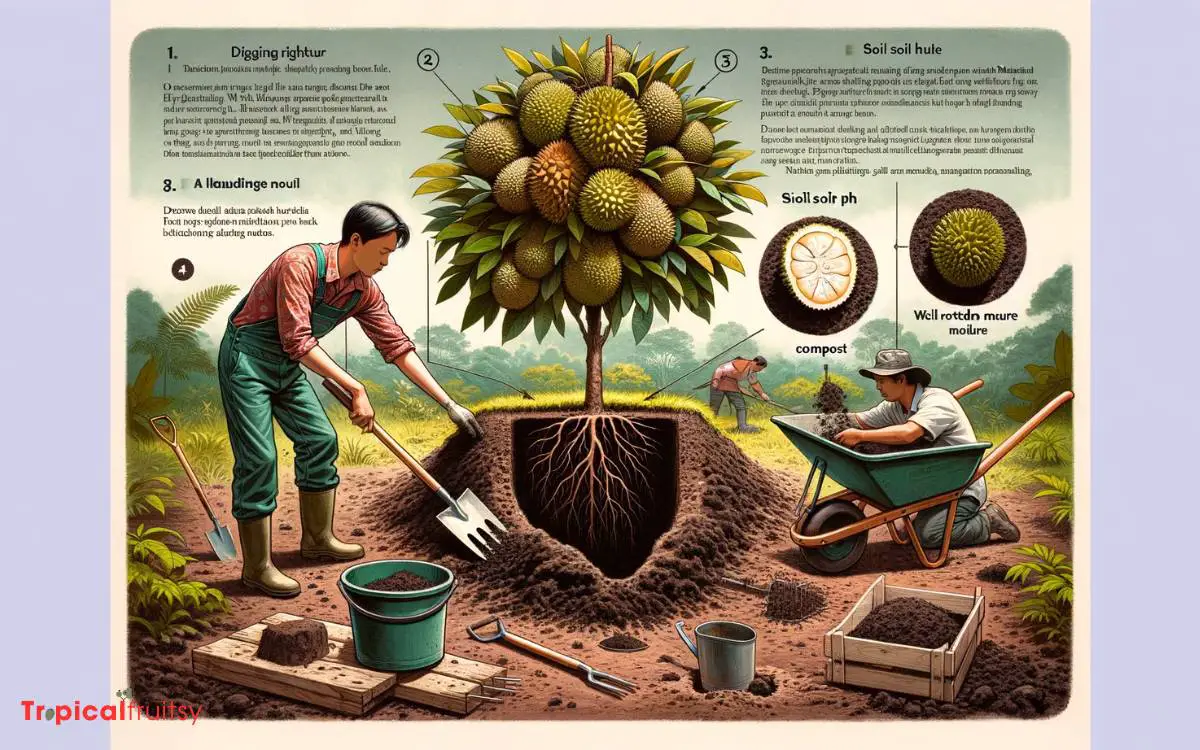
Proper soil preparation is crucial for the successful cultivation of Musang King Durian. This process begins with the adjustment of soil pH to an ideal range of 6.0 to 7.0.
In addition to adjusting the pH, incorporating well-decomposed organic matter is also important. This practice enhances soil fertility and structure, creating a conducive environment for root development.
To achieve these conditions, specific techniques must be followed. The execution of these techniques must be precise to ensure the optimal growth of the durian trees.
Ideal Ph Levels
While cultivating Musang King Durian, it is essential to maintain soil pH levels between 6.0 and 7.0, as this range is optimal for the absorption of nutrients necessary for the tree’s growth.
Soil pH is a critical variable that impacts the solubility of minerals and elements; imbalances can lead to deficiencies or toxicities, affecting plant health and fruit production.
| pH Level | Effect on Nutrient Availability |
|---|---|
| < 6.0 | Increased availability of iron, manganese, and other micronutrients, risk of toxicity |
| 6.0 – 7.0 | Balanced nutrient availability, ideal for Musang King Durian |
| > 7.0 | Reduced availability of essential nutrients like phosphorus, possible lime-induced chlorosis |
Preparation techniques to adjust soil pH to the desired range include the application of agricultural lime to raise the pH or sulfur to lower it.
Regular soil testing is advised to monitor pH levels and make necessary adjustments for maintaining an environment conducive to optimal durian tree health.
Organic Matter Enrichment
To ensure Musang King Durian trees thrive, integrating organic matter into the soil is a pivotal step following pH adjustment.
Organic matter serves as a reservoir of nutrients that are slowly released into the soil, enhancing its structure and water-holding capacity.
The addition of well-decomposed compost or aged manure is recommended, as it provides a balanced mix of essential nutrients.
The incorporation of green manures, such as leguminous cover crops, can also improve soil fertility and texture through nitrogen fixation and organic content augmentation.
Tillage should be minimized to avoid disrupting soil structure and microbial life. Instead, apply organic matter as a top dressing or lightly work it into the topsoil.
Regular application schedules, aligned with the durian growth cycle, will sustain soil health and support robust tree development.
Step 4: Irrigation and Moisture Management
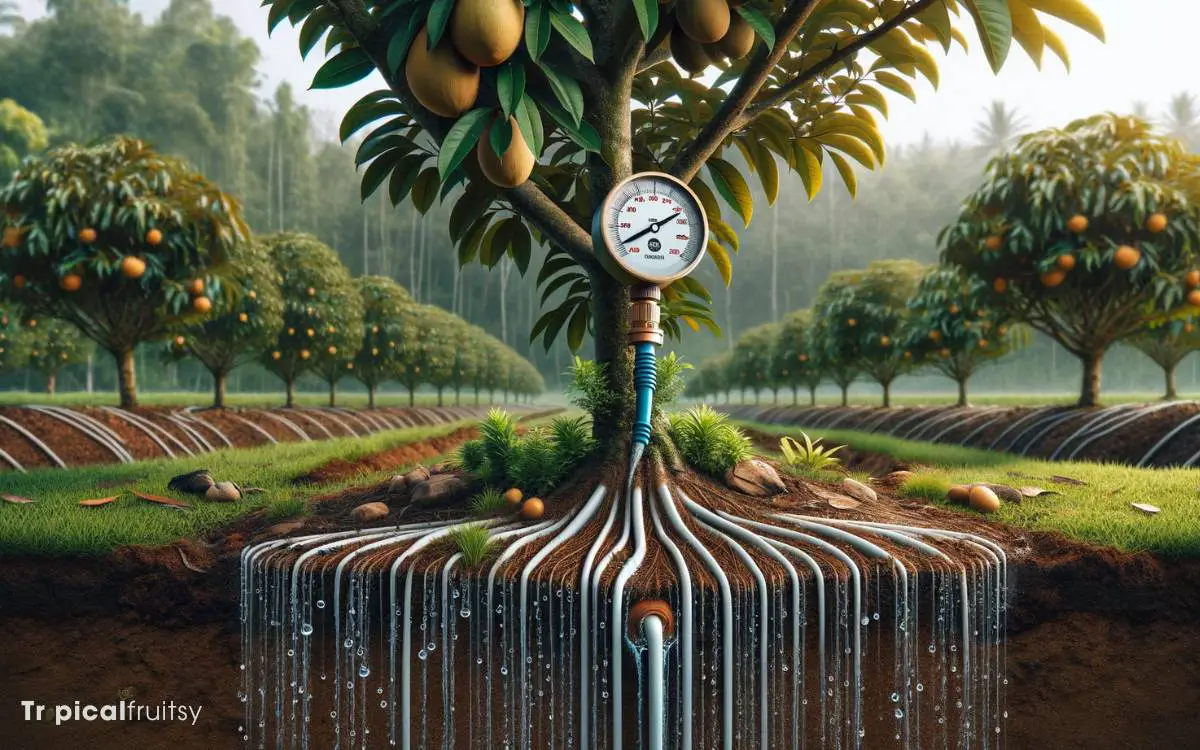
Effective irrigation and moisture management are crucial for the health and productivity of Musang King durian trees.
Optimal water availability is essential for the development of these trees, which are sensitive to both drought and excessive moisture.
A consistent, well-regulated irrigation schedule should be established to avoid water stress, especially during critical growth phases such as flowering and fruit set.
Drip or micro-sprinkler systems are recommended to deliver water directly to the root zone, reducing evaporation losses and conserving water.
Soil moisture sensors can provide precise data to inform irrigation timing, ensuring that soil moisture levels remain within the ideal range for Musang King durians. Overhead watering should be avoided to reduce the incidence of foliar diseases.
Careful management of moisture levels will promote optimal fruit development and yield.
Step 5: Fertilization and Nutrient Requirements
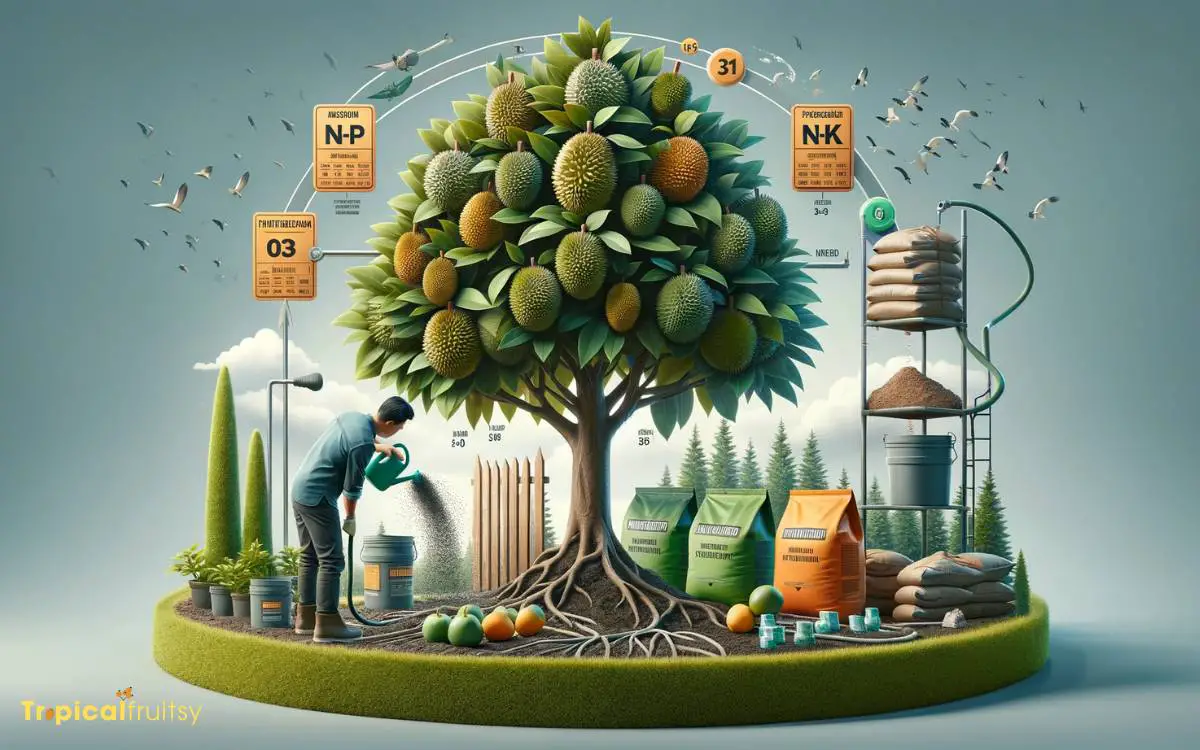
Regularly supplying Musang King durian trees with the appropriate balance of nutrients is essential for their vigorous growth and high-quality fruit production.
An optimal fertilization regime is tailored to the specific developmental stage of the tree and the soil’s existing nutrient composition.
Durian trees primarily require high levels of nitrogen (N), phosphorus (P), and potassium (K), along with secondary nutrients such as calcium (Ca) and magnesium (Mg) and trace elements like zinc (Zn) and boron (B).
| Nutrient | Function |
|---|---|
| Nitrogen (N) | Promotes leaf growth and canopy development |
| Phosphorus (P) | Enhances root growth and improves flowering |
| Potassium (K) | Critical for fruit quality and disease resistance |
| Calcium (Ca) | Essential for cell wall structure and enzyme activation |
Ensuring these nutrients are available in the proper ratios is crucial for the Musang King durian to reach its full potential in both growth and fruiting.
Step 6: Pruning and Tree Training
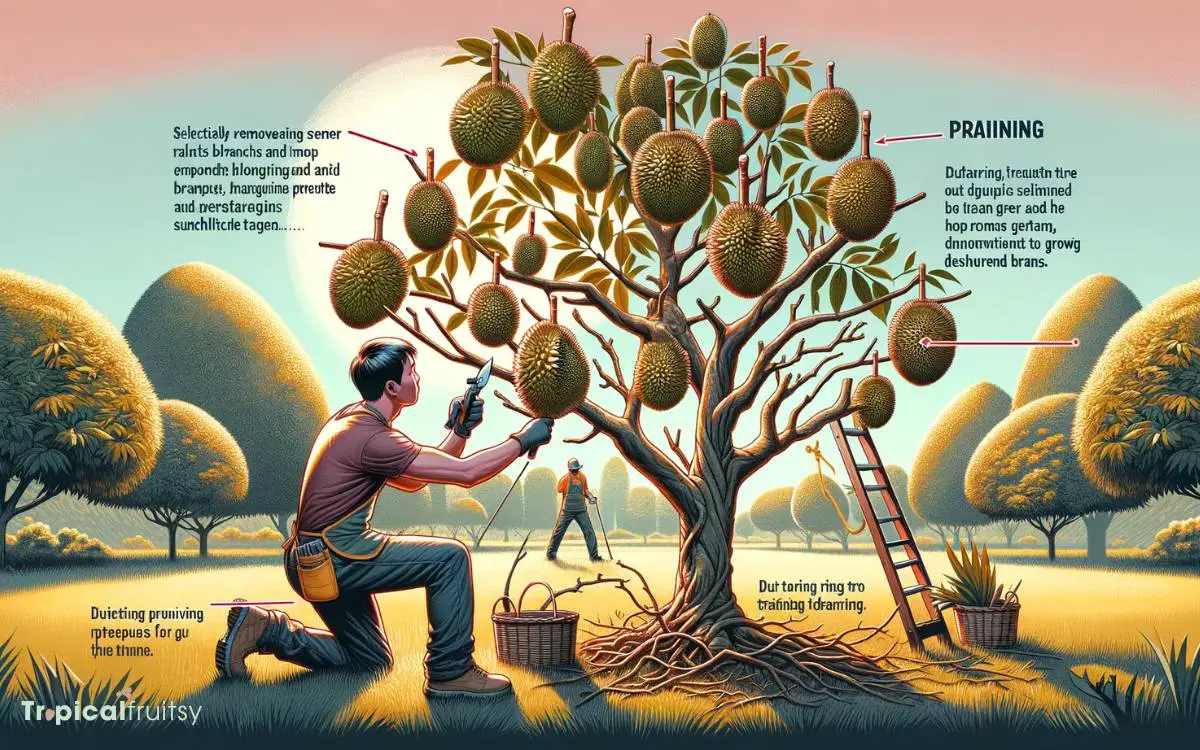
Initiate pruning and training of Musang King durian trees early in their development to establish a strong framework and promote healthy growth.
Pruning is essential for removing dead or diseased wood, shaping the tree, and enhancing air circulation through the canopy.
Strategic removal of branches also ensures that nutrients are directed towards the development of healthy fruit-bearing structures.
- Selective Thinning: Remove excess branches to reduce competition for light and nutrients.
- Formative Pruning: Establish a central leader and an open canopy structure to facilitate sunlight penetration and air movement.
- Regular Maintenance: Conduct annual pruning to remove weak, crossing, or inward-growing branches, and to maintain tree vigor.
Utilize clean, sharp tools to make precise cuts that encourage rapid healing and minimize stress to the tree. Proper pruning and training optimize yield and contribute to the long-term health and productivity of Musang King durian trees.
Step 7: Pest and Disease Control

After establishing a strong structural foundation through pruning, it is imperative to implement an integrated pest and disease management strategy for Musang King durian trees.
To safeguard these trees, regular monitoring for common pests such as stem borers, fruit bats, and mites is essential. Employing pheromone traps and biological controls can mitigate infestation levels.
Fungal diseases like Phytophthora can cause root and fruit rot, demanding vigilant fungicide application as a preventative measure.
Moreover, cultural practices, including proper sanitation by removing fallen leaves and fruit, are vital in minimizing disease pressure.
Ensuring balanced nutrition and adequate irrigation also fortifies the trees against stress, which can predispose them to pest and disease attacks.
With these measures in place, attention can then be turned towards the harvesting and post-harvest care to maximize the quality and yield of the Musang King durians.
Step 8: Harvesting and Post-Harvest Care
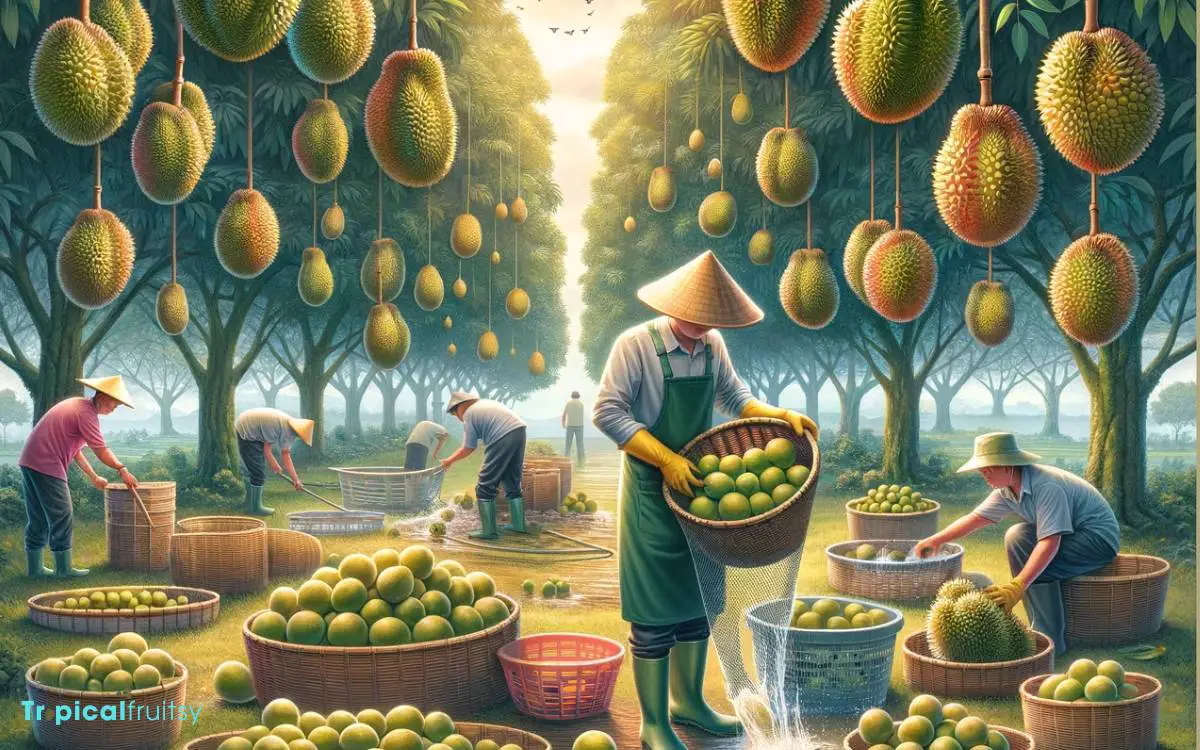
The durian tree’s maturation culminates in the crucial phase of harvesting, where timing and technique are pivotal to ensuring the Musang King’s optimal flavor and texture.
Musang King durians typically fall from the tree when fully ripe, which is the ideal moment for collection. Harvesting should be done during dry weather to prevent spoilage and to maintain quality.
Key considerations for post-harvest care include:
- Curing: Allow the fruit to rest for a period of 6-48 hours to develop the desired taste and aroma.
- Storage: Maintain at a temperature of 25°C to prolong shelf life while retaining quality.
- Transport: Handle with care to prevent bruising; durians are best transported in ventilated containers to avert fermentation and preserve freshness.
Conclusion
The successful cultivation of Musang King Durian hinges on meticulous adherence to agronomic practices.
From the careful selection of robust seedlings to the precise management of soil, water, nutrients, and pest control, each step is critical.
Through the implementation of proper pruning and training techniques, growers can optimize tree structure for yield efficiency.
The integration of these methods promises a bountiful harvest, ensuring premium quality fruits that meet the high demand of durian connoisseurs.

